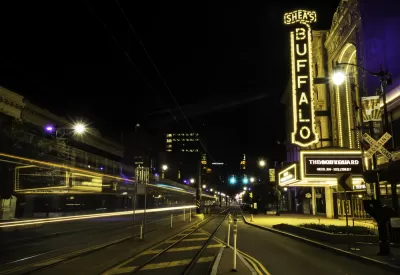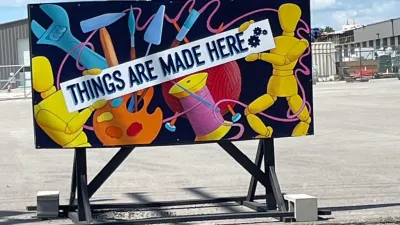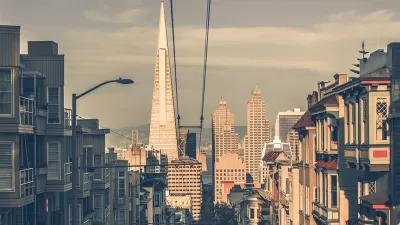Efforts to revitalize declining downtowns have, in some cases, become catalysts for supporting small, minority-owned, local businesses.

"What role should public spaces play as cities strive to recover more equitably? At a time when so many people and small businesses are suffering, what is the value of public space investments, and importantly, who stands to benefit from this value?" Hanna Love and Cailean Kok discuss the findings of research from Albuquerque, N.M., Buffalo, N.Y., and Flint, Mich., that found that public space investments play an important role in "shifting perceptions of places, in inspiring new infrastructure and private sector development, and in incubating underserved small businesses within the public spaces themselves." Each of the study cities "had wrestled with the well-known story of downtown 'decline' in the latter half of last century" and "invested in their public spaces as part of a larger effort to revitalize their downtown districts."
In addition to economic benefits, one stakeholder from Buffalo told researchers "I think the biggest impact Canalside has had is it’s demonstrated to us that we can have our downtown back. It gave the city confidence in its resurgence." In Albuquerque, "residents indicated that their views of downtown were slowly changing—largely due to programming at Civic Plaza, including concerts, movie nights, and farmers’ markets." Statements like this provide "further indication that a diverse activation of spaces and mixed uses in downtowns can be a critical component of economic resilience. Shifting perceptions of and increasing visitation to downtown was, of course, merely a first step in revitalization—but it arose as a common pattern across all three cities and all 78 interviews as one of the most impactful ways public spaces supported small businesses in the area." Public spaces seem to serve as "the 'catalyst' needed to demonstrate that new private sector investments (outside of solely office space) could be successful in downtowns, or the impetus for the public sector to increase public investment in the area."
The study's authors conclude that "[t]he way we plan, design, and program public spaces has far-reaching impacts for equity—shaping the amenities people have access to, the space available to them to grow a business, and the connections forged between people and places."
FULL STORY: The inclusive economic impacts of downtown public space investments

Planetizen Federal Action Tracker
A weekly monitor of how Trump’s orders and actions are impacting planners and planning in America.

Map: Where Senate Republicans Want to Sell Your Public Lands
For public land advocates, the Senate Republicans’ proposal to sell millions of acres of public land in the West is “the biggest fight of their careers.”

Restaurant Patios Were a Pandemic Win — Why Were They so Hard to Keep?
Social distancing requirements and changes in travel patterns prompted cities to pilot new uses for street and sidewalk space. Then it got complicated.

Platform Pilsner: Vancouver Transit Agency Releases... a Beer?
TransLink will receive a portion of every sale of the four-pack.

Toronto Weighs Cheaper Transit, Parking Hikes for Major Events
Special event rates would take effect during large festivals, sports games and concerts to ‘discourage driving, manage congestion and free up space for transit.”

Berlin to Consider Car-Free Zone Larger Than Manhattan
The area bound by the 22-mile Ringbahn would still allow 12 uses of a private automobile per year per person, and several other exemptions.
Urban Design for Planners 1: Software Tools
This six-course series explores essential urban design concepts using open source software and equips planners with the tools they need to participate fully in the urban design process.
Planning for Universal Design
Learn the tools for implementing Universal Design in planning regulations.
Heyer Gruel & Associates PA
JM Goldson LLC
Custer County Colorado
City of Camden Redevelopment Agency
City of Astoria
Transportation Research & Education Center (TREC) at Portland State University
Camden Redevelopment Agency
City of Claremont
Municipality of Princeton (NJ)





























